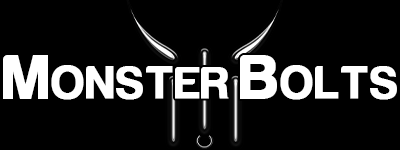US Threads Per Inch (TPI) Table – Monster Bolts
US (inch) screws are defined by Threads Per Inch (TPI)—the number of threads in one inch of the fastener. Metric fasteners use a different system, Metric Thread Pitch, and the two systems are not interchangeable.
🔄 Need metric? Compare with our Metric Thread Pitch Table.

How to measure TPI (fast, accurate)
- ½-inch method: Place a ruler along the threads, count the number of thread peaks across ½″, then double that number. (Counting a longer distance reduces error.)
- Thread gauge: Use a TPI gauge if available for a quick confirm.
- Don’t mix systems: If your part spec is metric (e.g., M8×1.25), do not substitute a US size; the fit and strength can be compromised.
UNC vs UNF (and UNEF)
- UNC (Coarse): fewer threads per inch, better for general use, softer materials, and faster assembly.
- UNF (Fine): more threads per inch, better for thinner walls, higher clamp load control, vibration resistance.
- UNEF (Extra Fine): niche applications; rarely used in general hardware (not included in the chart below).
What does “#8-32” or “1/4-20” mean?
#8-32 = #8 screw size with 32 TPI (fine vs coarse depends on the size). 1/4-20 = 1/4″ diameter with 20 TPI (UNC). When in doubt, check the table and your application needs.
US Threads Per Inch (TPI) Chart
| Screw Size | Coarse / UNC | Fine / UNF |
|---|---|---|
| #0 | – | 80 |
| #1 | 64 | 72 |
| #2 | 56 | 64 |
| #3 | 48 | 56 |
| #4 | 40 | 48 |
| #5 | 40 | 44 |
| #6 | 32 | 40 |
| #8 | 32 | 36 |
| #10 | 24 | 32 |
| #12 | 24 | 28 |
| 1/4″ | 20 | 28 |
| 5/16″ | 18 | 24 |
| 3/8″ | 16 | 24 |
| 7/16″ | 14 | 20 |
| 1/2″ | 13 | 20 |
| 9/16″ | 12 | 18 |
| 5/8″ | 11 | 18 |
| 3/4″ | 10 | 16 |
| 7/8″ | 9 | 14 |
| 1″ | 8 | 12 |
| 1-1/8″ | 7 | 12 |
| 1-1/4″ | 7 | 12 |
| 1-1/2″ | 6 | 12 |
Note: In addition to UNC (coarse) and UNF (fine), a much less common UNEF (extra fine) series exists but is rarely used in general hardware, so it’s not included here.
Related charts & tools:
Need inch fasteners? Explore our US screw & bolt collection. We ship fast from Milton, Florida.
